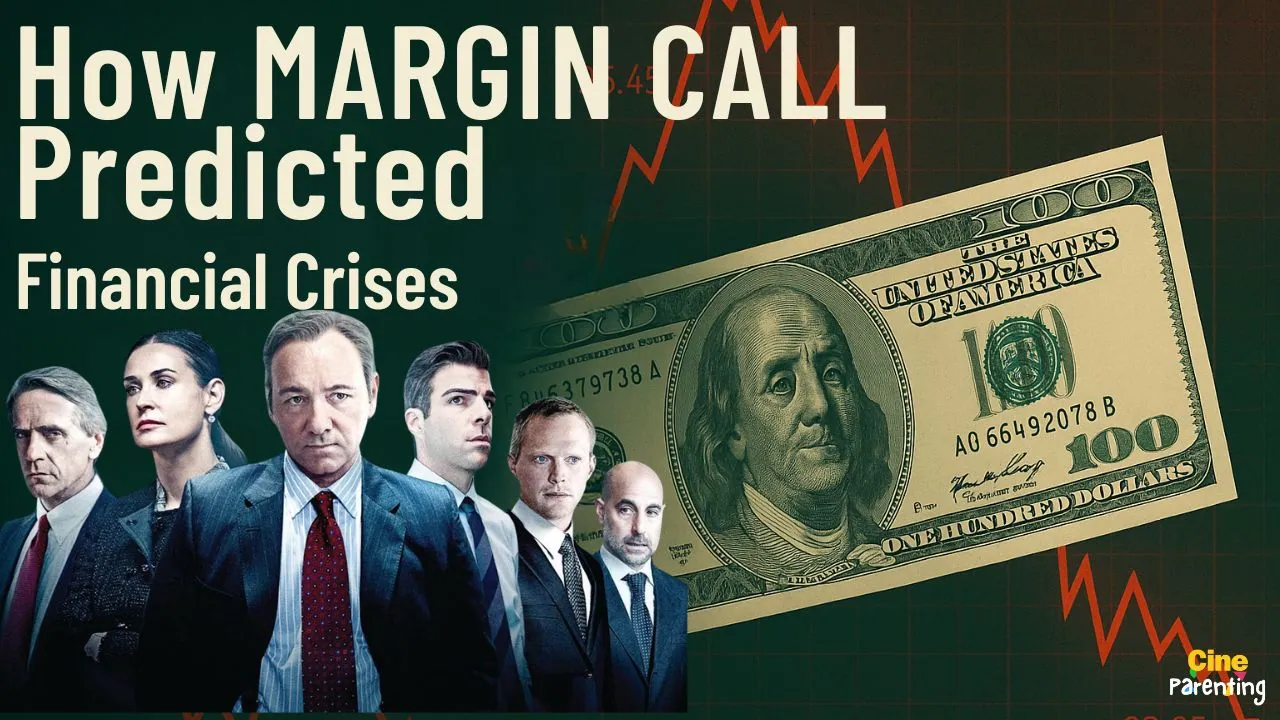Margin Call is a 2011 financial thriller that takes place over a tense 24-hour period at a fictional investment bank on the brink of collapse.
Though fictional, the movie closely mirrors the events leading up to the 2008 financial crisis.
But what makes Margin Call so powerful isn’t just how it captures the past — it’s how it eerily predicts the patterns that lead to future economic collapses.
Let’s dive into how Margin Call acts as a warning sign for financial disasters.
A Snapshot of the 2008 Financial Crisis
To understand Margin Call‘s impact, we first need a quick recap of the real crisis. In 2008, banks and financial institutions around the world collapsed under the weight of bad debt, particularly in the U.S. housing market.
Risky mortgage-backed securities, excessive leverage, and a lack of regulation all contributed to the crash.
The result? A global recession, millions of jobs lost, and an entire industry’s credibility shaken.
What Happens in Margin Call
The story follows a junior risk analyst who discovers that the firm’s portfolio of mortgage-backed securities is far more toxic than anyone realized.
The firm’s losses could exceed its total market value. Senior executives are forced into a late-night decision: sell the worthless assets before the market finds out, even if it means betraying their clients and destroying their reputation.
This fictional scenario is a thinly veiled version of what Lehman Brothers, Bear Stearns, and others faced in 2008.
What Margin Call Gets Right — and Why It’s Predictive
The Ignorance of Risk
Executives in the film don’t understand the risk they’ve taken until it’s too late. They rely on flawed models and ignore warnings from risk managers.
This exact pattern happened in 2008, and continues in sectors like crypto and tech bubbles.
Prediction Insight: Future crises often stem from institutions taking risks they don’t fully understand.
Profit Over Ethics
When faced with collapse, the firm’s leaders choose to offload toxic assets to unsuspecting buyers. It’s a cold, calculated decision.
Prediction Insight: Moral hazard — the idea that firms will act recklessly if they don’t face consequences — is still alive today. From meme stocks to AI-powered trading, the temptation to profit quickly without considering long-term consequences persists.
Failure of Oversight
Throughout Margin Call, there’s little mention of government regulators or safeguards. The firm is left to handle its crisis in isolation, with no checks on its actions.
Prediction Insight: A lack of oversight is often a warning sign. Whether it’s banking, cryptocurrency, or tech, unregulated markets often spiral out of control.
Too Big to Fail Mentality
The characters know their firm’s actions will hurt others, but they justify it as necessary for survival. The idea is: “If we go down, the system goes down.”
This mentality was echoed during the 2008 bailout discussions and continues to influence policies today.
Prediction Insight: Systemic risk is still a threat — when one firm is big enough to bring down the economy, future collapses are inevitable without reform.
Warnings Ignored
In the movie, the risk manager who raised concerns is laid off just hours before the crisis unfolds. This reflects real-world situations where whistleblowers or cautious analysts were ignored or silenced.
Prediction Insight: Financial institutions often punish those who challenge the status quo, leading to blind spots and repeated mistakes.
Why It Still Matters Today
More than a decade later, Margin Call remains relevant. Its themes echo in current financial debates:
- Crypto market crashes and unregulated exchanges like FTX
- Tech companies inflating valuations without profits
- Bank failures like Silicon Valley Bank in 2023
- Growing concerns about AI and algorithmic trading risk
The film doesn’t just retell the past — it outlines a cycle of greed, denial, and collapse that keeps repeating unless serious changes are made.
Conclusion
Margin Call is more than a movie — it’s a mirror. It shows us how easily financial systems can spin out of control when driven by profit at all costs, and how the same mistakes are made again and again.
By understanding the warning signs, both investors and the public can be more aware of how fragile financial systems really are.
FAQ
Q: Is Margin Call based on a true story?
A: It’s fictional but heavily inspired by real events during the 2008 financial crisis, especially the fall of Lehman Brothers and Bear Stearns.
Q: Who are the main characters in the Margin Call movie?
A: The cast includes Kevin Spacey, Jeremy Irons, Zachary Quinto, Paul Bettany, Demi Moore, and Stanley Tucci — playing executives and analysts in an unnamed investment firm.
Q: Does the Margin Call explain financial terms clearly?
A: Yes. It breaks down complex ideas like leverage, risk models, and toxic assets in simple language, making it accessible even if you’re not a finance expert.
Q: What can viewers learn from Margin Call?
A: That unchecked risk, lack of transparency, and moral compromises can lead to devastating consequences, in fiction and in real life.

